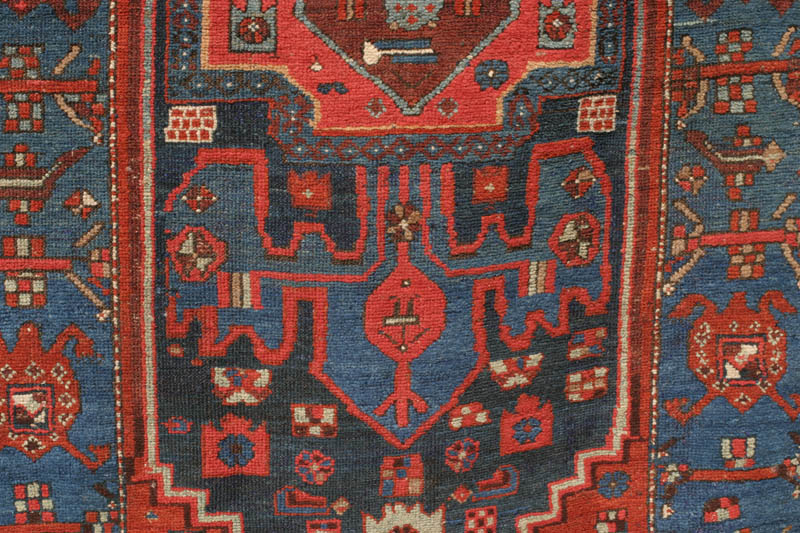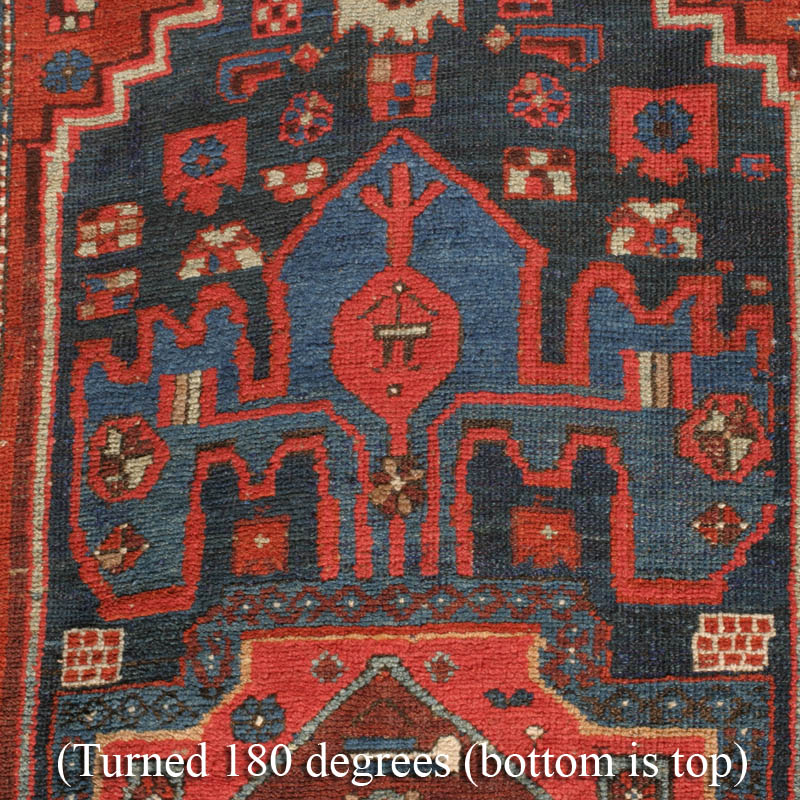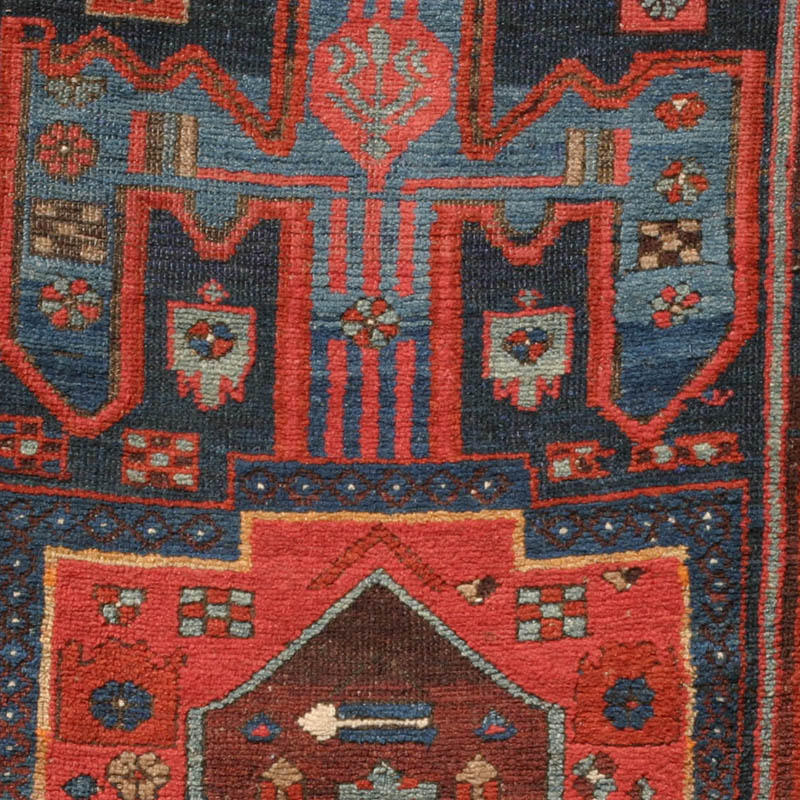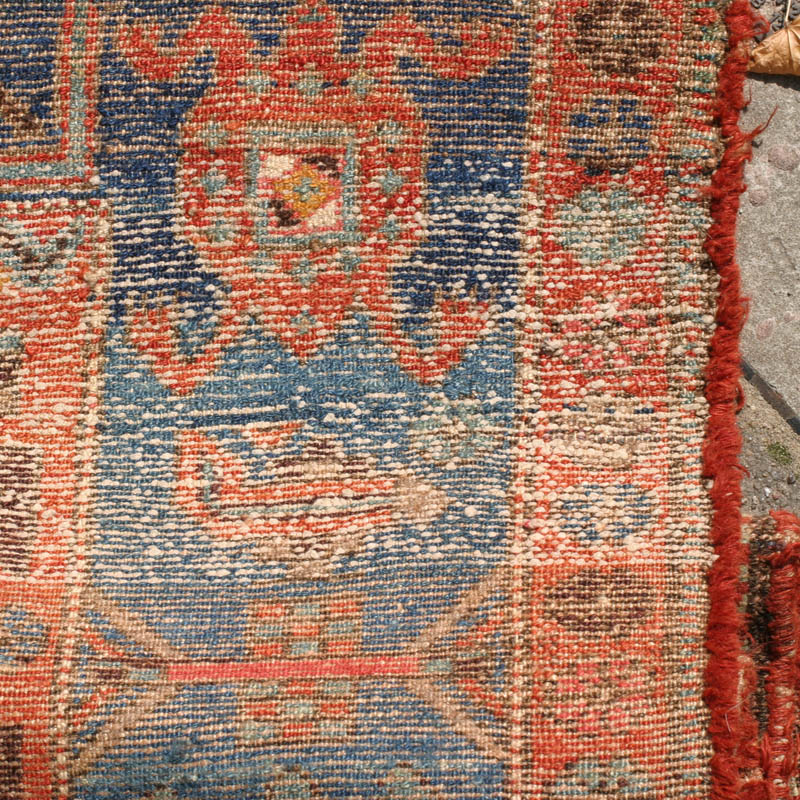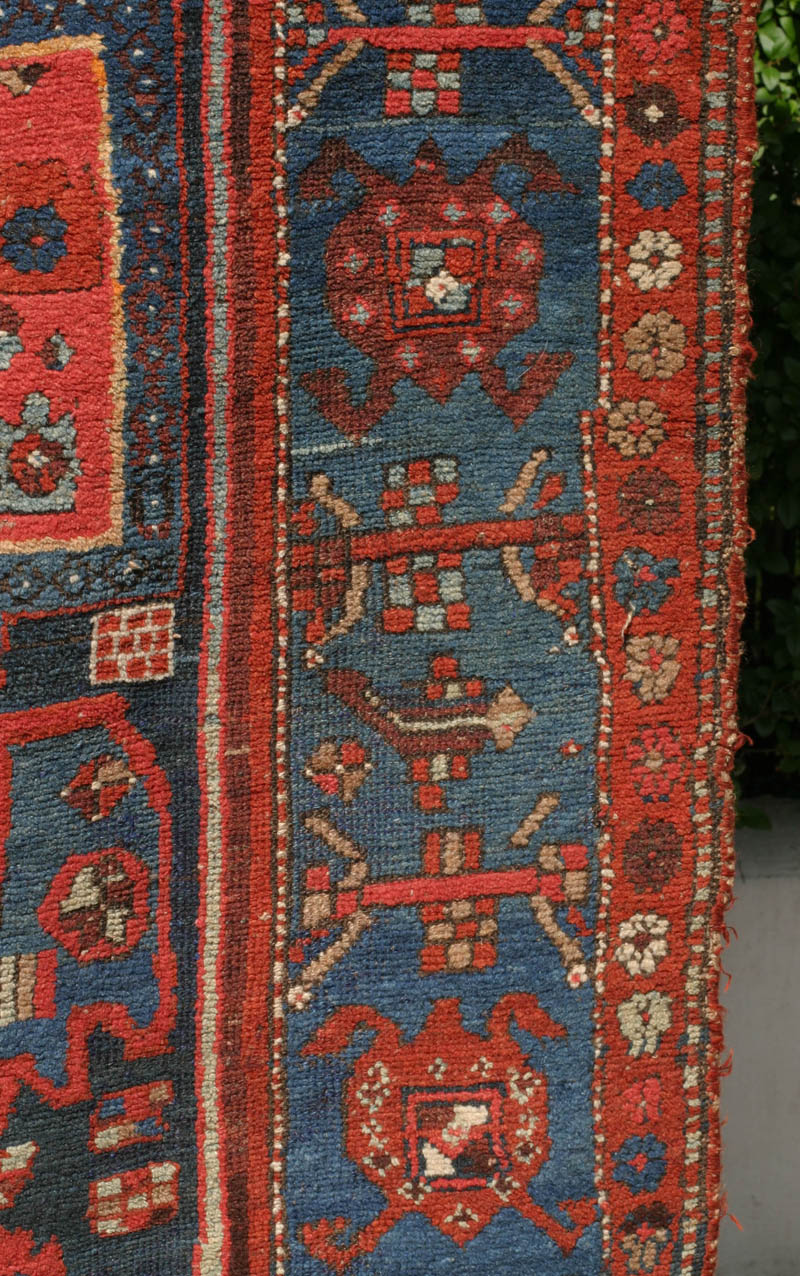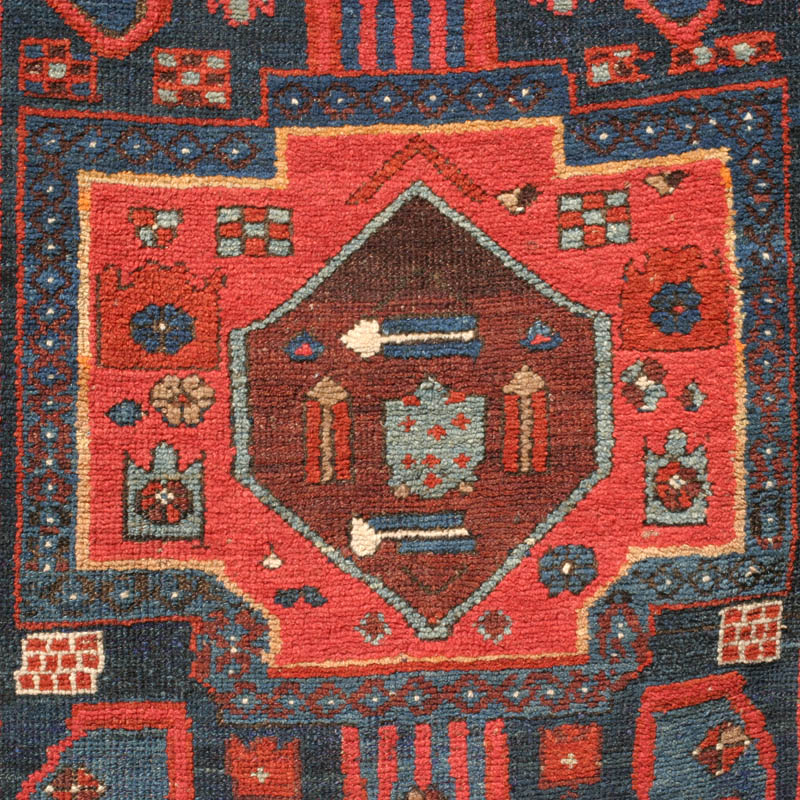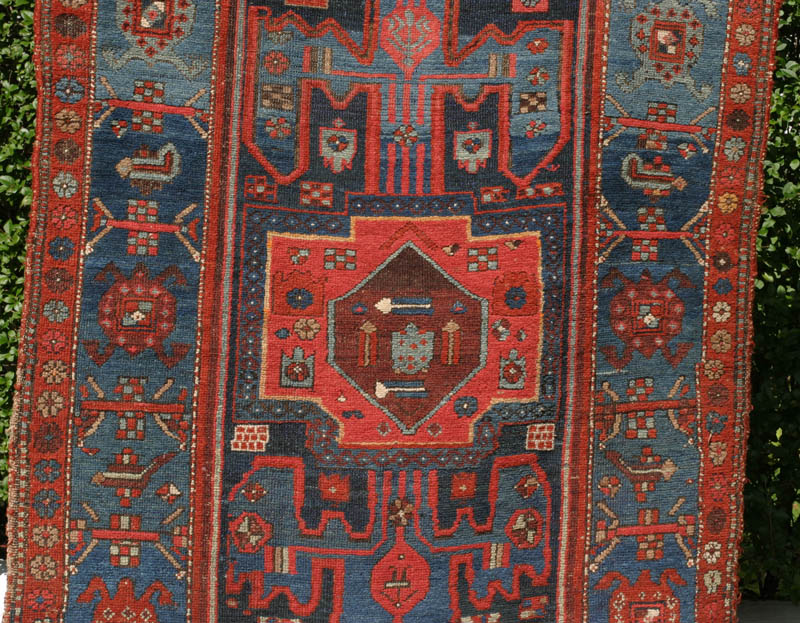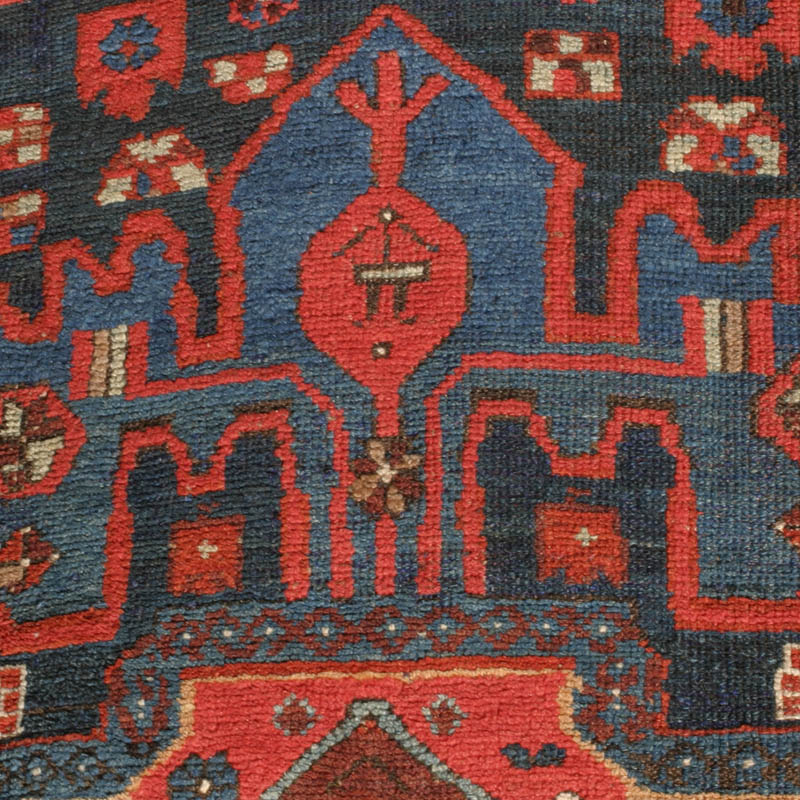In his auction catalogue text, Ian Bennett attributes this rug to the kolyai / Qulya'i Kurds in the Sultanabad (Arak) area, noting that 'it is interesting to see how a purely floral element, the so-called "turtle" palmette, has here been turned into an actual turtle, although it seems unlikely that this has any symbolic or religious significance, as some writers have claimed.'
C. Edwards, in his book The Persian Carpet, calls this typically Kurdish design the 'anchor design' and reproduces a much coarser variant in the Shirishabad Kurdish rug reproduced as fig. 131. He describes the anchor design as a corruption of the once elegant medallion pendants of 16th c. Persian carpets. Coarser but still refined versions are often found in older Bijars. Eagleton has another variant in his plate 18, with lighter anchors extending somewhat incongruously from a diamond-shaped herati-filled medallion. Compared to all these, the anchor design here is positively brutal, but quite beautifully so.
Charming are the small human figures, clearly rendered in the fork-crowned red hexagon shape in lower anchor, humanoid and verging on the vegetal in the top anchor. Regarding the design elements of the central medallion, more particularly the bar forms inside the inner brown hexagon that seem to group or circle round a small light green shield with red dots, I am at a loss. These could be plant shapes, corrupted botehs, arrows or, for the symbolically minded, phallus symbols. My guess is they are actually none of these.
Secondary motivs strewn across the field and corner spandrels are checkerboards, crown shapes(?), angular botehs and rosettes.
| (1-A) The turtle motive seen in a field design of a Kolyai rug reproduced as plate 13 in Eagleton's 'An introduction to Kurdish rugs' | (1-B) Compare the turtle motif in border of this Kolyai rug |
|---|---|
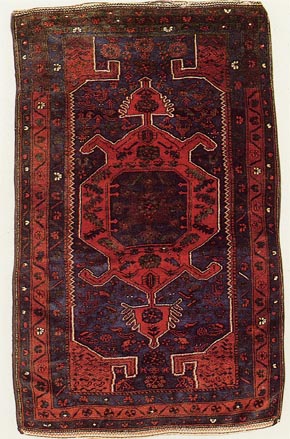
|
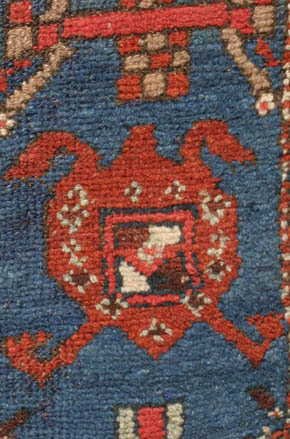 |
The turtle motive seen in the main border is the same used as field design in Eagleton's plate 13. Eagleton states that it is a form often found in Kurdish rugs from the Kolyai area. His example can be read as a turtle, but I think it far from certain that it was actually perceived as such by the weavers at the time of production. The same has been said about certain types of medallons found in Qashqa'i rugs.
The rug measures 7ft.1in. x 4ft. (216 x 122 cm). Structurally the weave is similar to Hamadan, non-depressed, with symmetrical knots and single weft. Warps and wefts are wool (warps are off-white, wefts a light orange-brown) apart from three bands of cotton wefts (8 inch wide near the top, two inch wide around the lower end of the upper quarter, and 5 inch around the centre of the lower third—not that it really matters, but it can be so (self-)pleasing to be pedantic). One band of cotton wefts can be seen on the picture of the back further down. The weave is coarse, the horizontal knot count is h.25/10, the vertical knot count is v.29/10, which means roughly 725 knots/dm2 (or, converted to to inches, h.6,v.7.5 = ca. 45 kpsi) This results in a V/H ratio of 1.16. Fat single cord selvage wrapped in brown wool.
Good condition, short pile, in some central areas nearly down to knotheads, nice wool. Structurally sound. The top end has been treated to a selvedge-type wrapping.
A palette dominated by different shades of nicely abrashed indigo blue and several shades of red: a brownish madder red, a darker red-brown, and a cooler red. The latter two might be synthetic, I am not sure. I can't see tip fading, and colours on front and back look the same, so in any case dyes are stable to light. Noticeable is the use of a nice mottled blue-green. Then there is a light camel brown, a sparingly used orange (synthetic?) and dark brown used for outlining.
